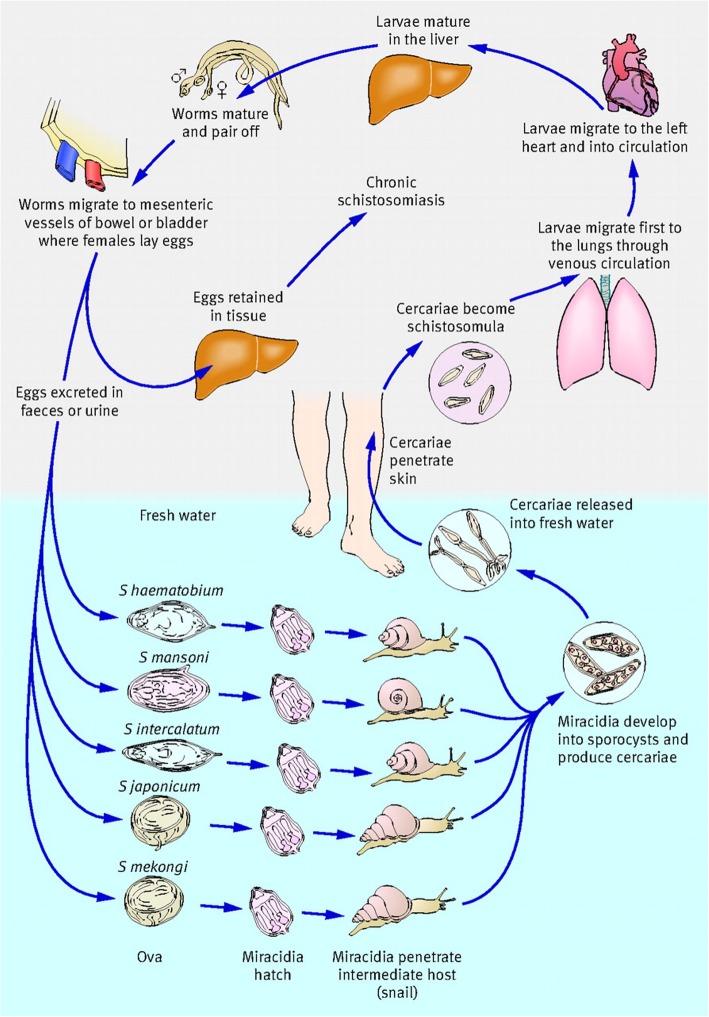Fig. 1.
Life cycle of schistosomes. Five of the species of schistosome that infect humans are depicted. Infection occurs upon contact with fresh water contaminated with the free-swimming larvae known as cercariae. Cercariae penetrates the skin of humans and/or other mammalian hosts, shed their tails and transform into migrating larvae which enter into circulation traversing various host organs en route to the lungs. After many days, the worms exit the lungs and migrate to the veins of the portal system where they mature into adult male and female worms and form pairs. Worm pairs then migrate to the either the superior mesenteric veins (Schistosoma mansoni) inferior mesenteric and superior hemorrhoidal veins (S. japonicum), or the vesical plexus and veins draining the ureters (S. haematobium). Oviposition begins approximately 4–6 weeks post infection and continues throughout the lifespan of the worm. Some of the eggs laid pass from the lumen of blood vessels into various host tissues in close proximity while the remaining eggs pass through the intestinal wall or bladder and are released into the environment in feces (S. mansoni and S. japonicum) or urine (S. haematobium). Upon contact with water, the released eggs hatch into motile miracidia, which in turn, infect specific fresh water intermediate snail host depending on the species. S. mansoni infects Biomphalaria species while S. haematobium infects Bulinus species and S. japonicum infects Oncomelania species. Within the snail host, the larvae undergo a series of asexual reproduction and develop into sporocysts. Upon exposure to sunlight, ceracariae are released into fresh water to infect suitable mammalian hosts. Figure obtained from Gray DJ et al. [8] and used with permission

